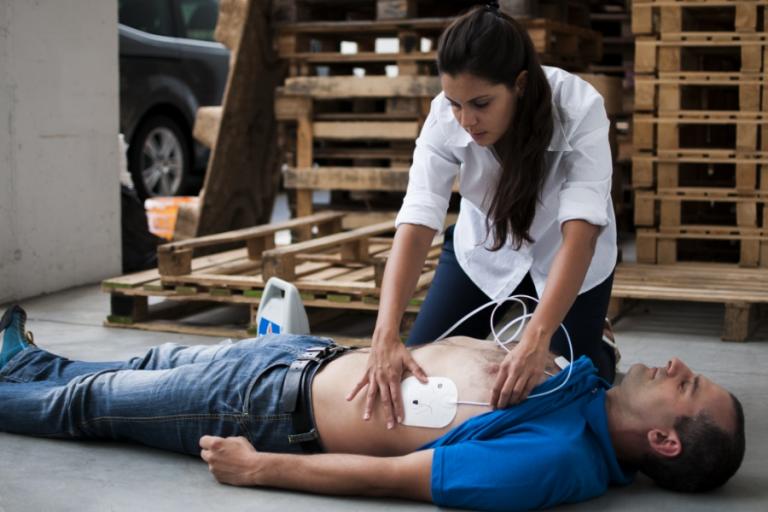MORE INFORMATION
Defibrillators What are Defibrillators?
 Defibrillators are devices that apply an electric charge or current to the heart to restore a normal heartbeat. If the heart rhythm stops due to cardiac arrest, also known as sudden cardiac arrest (SCA), a defibrillator may help it start beating again. A sudden cardiac arrest is fatal unless treated right away with CPR (cardiopulmonary resuscitation) and a defibrillator.
Defibrillators are devices that apply an electric charge or current to the heart to restore a normal heartbeat. If the heart rhythm stops due to cardiac arrest, also known as sudden cardiac arrest (SCA), a defibrillator may help it start beating again. A sudden cardiac arrest is fatal unless treated right away with CPR (cardiopulmonary resuscitation) and a defibrillator.
Some implantable or wearable defibrillators can also correct certain dangerous arrhythmias, which are problems with the rate or rhythm of your heartbeat.
Defibrillators can lower the risk of sudden death among people who have a known arrhythmia or a high risk of a life-threatening arrhythmia from causes such as diseases, heart failure, or a prior cardiac arrest.
Types of defibrillators

- Defibrillators have different uses, depending on the type. Automated external defibrillators (AEDs) are found in many public spaces. They can save the lives of people who are in cardiac arrest. The unit tells the operator what to do. Even untrained people can use an AED in an emergency. Healthcare providers sometimes recommend keeping an AED at home if someone has a high risk for cardiac arrest.
- Implanted cardioverter defibrillators (ICDs) are small devices surgically placed in the chest. They are preprogramed to automatically detect cardiac arrest or a life-threatening arrhythmia. They then send a high-energy electric charge to stop the arrhythmia or restart the heart after cardiac arrest. Some ICDs also act as pacemakers by giving low-energy electrical pulses to help the heart beat at a normal rhythm. Others can send pulses of electricity to sync the rhythm of the heart’s lower chambers.
- Wearable cardioverter defibrillators (WCDs) are vests with a rechargeable battery. Similar to the ICD, they automatically detect a life threatening rhythm and send an electrical charge to restore a normal rhythm. WCDs are usually for short-term use.
It takes time and effort to get used to living with a defibrillator. Learn about common complications and how to minimize disruption to daily activities in the living with a defibrillator section.

